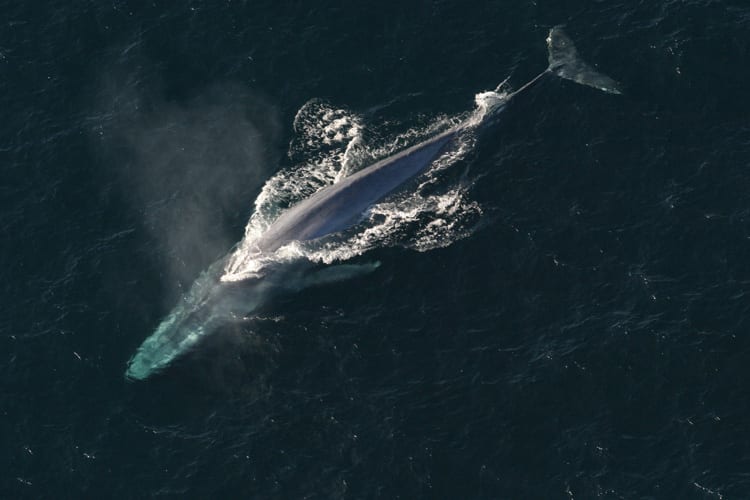Blue Whale Mouth Coordination (March 26)


Lest you think everything to be discovered has already been discovered, a recent examination of whales has revealed a previously unknown organ – completely different from any other structure found throughout the animal kingdom. Researchers studying blue whale carcasses in Iceland used MRI scans to identify this unique fluid-filled sac (the size of a small cushion) within their chins. This new organ helps the blue whale coordinate its mouth movements during lunge feeding.
Blue whales are the largest creatures on the earth and feed by lunging through the water. At just the right moment, they open their mouths so wide that they screech to a halt like a drag-racer deploying a parachute. Before they come to a stop, they gulp enormous amounts of water filled with krill (shrimp-like creatures). Whales swallow the equivalent of their enormous body mass (400,000 pounds) of water with each gulp. For many years, scientists have wondered how they co-ordinate their jaw movement in order to capture and filter the krill so efficiently.
The newly discovered organ within their mouths has provided the answer. This organ contains millions of microscopic, finger-like nerve structures and blood vessels that change shape as the jaw moves. This enables the mouth to open extra wide at just the right moment. But here is the most amazing example of modern man’s intellectual blindness. Because the nerves from this newly discovered organ go through the jaw cavity to the whale’s brain, these researchers attribute the existence of this organ to “a tooth socket earlier in whale evolution”! In other words, they would rather believe that a toothache turned into a complex organ (with absolutely no evidence to support such wild speculation) than to acknowledge that the existence of the blue whale, with all of its intricate design, involved a Creator.
We all need to stand back and marvel at God’s detailed handiwork.
Deuteronomy 3:24
Reference
Whoopee-cushion sized organ helps whales feed
Pyenson, Nicholas. Jan. 2012. Science. p.
